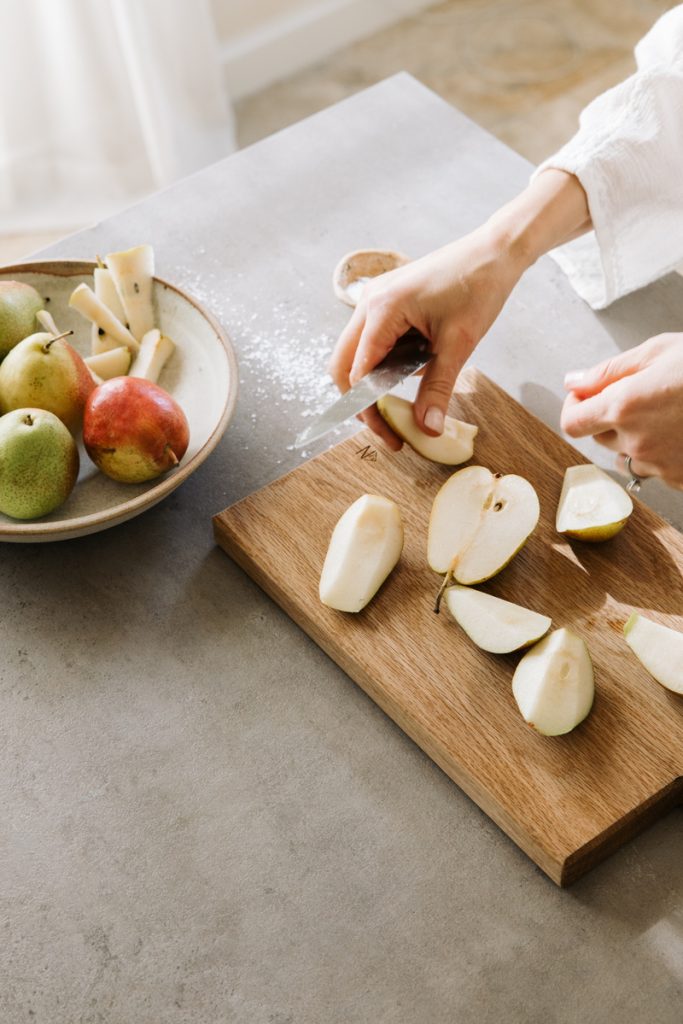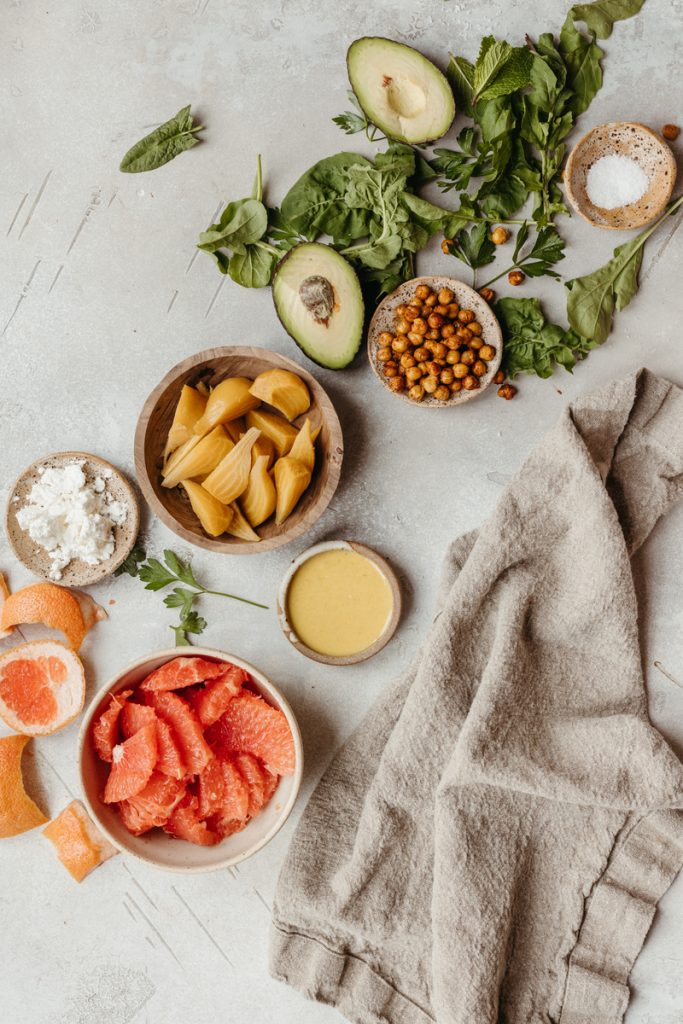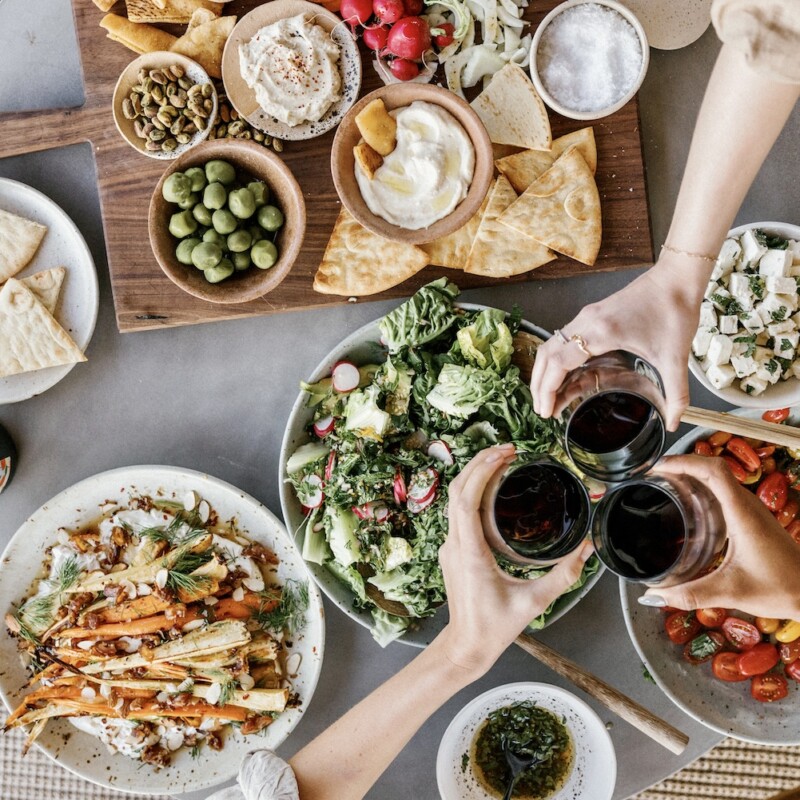Counting down the days until your next adventure? Same. It’s no secret that summer is notorious for weekend getaways, basking in remote beach towns, and exploring the roads less taken. Or at the very least, relishing a staycation in your hometown. Get ready to pack your favorite travel uniform and a few nourishing snacks. Whether you’re jetting to California’s central coastline—or hopping to (yet another) work conference—there’s one thing to keep in mind, no matter your travel path: blood sugar balance. Even while you explore new places, maintaining stable blood sugar is important. Fortunately, it’s not hard to do! This summer, create unforgettable memories and implement these blood sugar travel tips along the way.



Blood Sugar Balance—on the Go
With travels heating up, there’s no better time to chat about blood sugar balance. After all, it can be difficult to maintain a consistent routine (and eat nourishing meals!) when you’re living out of a suitcase. Furthermore, it’s easy to be derailed by circumstances: delayed flights, eating out, and no gym access. However, you can absolutely keep blood glucose balanced as you traverse the world.
Today, we’re sharing easy hacks to keep your blood sugar stable while traveling! With a little bit of foresight, you can say bon voyage to sugar spikes on the road.


Most Americans Have Unstable Blood Sugar
Did you know that unstable blood sugar impacts more than 88% of Americans? Yes, 88%. Unfortunately, most of us are walking around with sugar spikes and crashes—all day long. Eventually, these sugar spikes and crashes eventually become the underlying factor in countless chronic conditions: diabetes, inflammation, and hormonal imbalances. Luckily, not all hope is lost. In fact, you can begin to improve your blood sugar (and thus, your focus, sleep, energy, and mood) in just one day.
Why is blood sugar balance important?
Let’s back up. What is blood sugar—and why is it important? You want to keep blood sugar balanced (as often as possible). This helps prevent or delay long-term, serious health problems. Think: heart disease, vision loss, kidney disease, and unwanted weight gain. That said, on a day-to-day basis, staying in your target range is equally important. It can improve your energy, balance hormones, minimize intense PMS symptoms, stabilize your mood, and more. In many ways, blood sugar is the master controller.
Blood sugar—also known as blood glucose—is the amount of sugar in your blood at any given time. It’s produced when the body breaks down carbohydrates.


How do I know if my blood sugar is balanced?
Great question. Before you start wearing a continuous glucose monitor (which gives you immediate and direct insight into your blood glucose levels), tap into your body’s feedback. Has it been hours since you’ve eaten—and do you feel hangry, foggy, or shaky? These are signs of low blood sugar. Do you experience intense sugar cravings or mood fluctuations shortly after eating? These are signs of high blood sugar. Generally speaking, symptoms like headaches, fatigue, trouble concentrating, and weight gain can be tied back to blood sugar instability.


Does travel impact blood sugar?
Yes, it can. Ultimately, any change in diet, activity levels, and environment (temperature, altitude, etc.) can affect blood glucose levels. Additionally, factors like staying in a hotel—and not sleeping as well— can impact overall health.
Disrupted Routine
Travel often disrupts regular routines, including meal times, physical activity levels, and medication schedules. These changes can affect blood sugar management, leading to fluctuations in glucose levels.
Dietary Changes
While traveling, dietary changes are inevitable. Thanks to different time zones, availability of food options, and eating out more frequently, these things can result in blood sugar spikes. Not to mention, consuming unfamiliar foods, indulging in higher-carbohydrate or high-sugar meals, or experiencing inconsistent meal timings can impact blood sugar control.
Decreased Physical Activity
Between sitting during long flights or drives, and not having access to your typical workout classes, decreased physical activity is common during travel. That said, activities like sightseeing, hiking, and biking increase physical exertion!
Stress And Jet Lag
This goes without saying, but travel is stressful. And stress hormones can cause blood sugar levels to rise. Additionally, crossing multiple time zones can disrupt the body’s internal clock. Hello, jet lag. Jet lag disturbs sleep patterns and eating schedules, potentially affecting blood sugar regulation.


How To Keep Blood Sugar Stable While Traveling
Luckily, there are helpful blood sugar travel tips to keep your blood sugar stable! And they’re easy to implement. While traveling is wonderful and exhilarating, it can also challenging and exhausting—all the more reason to maintain balanced blood sugar. In turn, you’ll be better equipped to handle (inevitable) travel obstacles. To enjoy your vacation to the fullest, take time to planning ahead, prioritize balanced meals, and move your body—daily. Of course, relaxing, unwinding, and being spontaneous are equally important, too! It’s all about sticking with the plan but going with the flow.


Healthy Travel Hacks
Without further ado, below are our tried-and-true healthy travel tips. Wherever you go—this summer and beyond—we hope you lean into wanderlust, staying energized and balanced along the way.
1. Plan Ahead
Before you set off on your trip, create your itinerary. Planning ahead includes packing healthy snacks, bringing electrolyte packets for your water bottle, and a sleep mask/earplugs. It’s also helpful to research local restaurants, grocery stores, and food options that align with your dietary needs. Planning (some of!) your meals and snacks in advance can ensure you have healthy options readily available. In turn, helping you maintain stable blood sugar levels.
2. Bring Snacks
There’s no need to stuff your suitcase with shelf-stable food, but bringing nourishing snacks (that are easy to carry with you) can save you in a pinch. You can also pack chia seeds and protein powder—to add to oatmeal, for example. Keep in mind that finding carb-rich snacks is usually easy, so focus on packing protein and fat-forward snacks. A few of our favorites: nut butter packets, high-fiber protein bars, pistachios, walnuts, dark chocolate, and no-sugar-added jerky.


3. Stay Hydrated
Proper hydration is essential for everyone, particularly when managing blood sugar levels. In essence, dehydration can cause blood sugar to rise. Carry a refillable water bottle with you and sip on water throughout your journey. Avoid sugary drinks and opt for water or unsweetened beverages instead (unsweetened iced tea, sparkling water with lime, etc.). Need a new reusable water bottle? We have you covered.
4. Move Your Body
This isn’t about booking an intense workout class, clocking hours at your hotel gym, or foregoing brunch to get your workout in. After all, your vacation is meant to be that—a vacation from your weekly routine. That said, movement is extremely helpful when it comes to blood sugar balance. Take advantage of opportunities to walk or bike, find a local yoga studio to stretch after flying, and consider incorporating efficient exercise into your daily routine.
Even 10-15 minutes of bodyweight exercises will help soak up the excess glucose in your blood and stabilize your blood sugar. Additionally, many destinations offer opportunities for outdoor activities (hiking, paddle boarding, swimming, etc.). Make movement fun again!


5. Prioritize Protein
When possible, look for restaurants that offer healthy options: salads, grilled meats, and vegetable-forward dishes. Here are helpful restaurant apps to get you started. However, depriving yourself of seasonal ice cream or a pain au chocolat isn’t the goal. You’re on vacation, after all! But when in doubt, prioritize protein. Especially for breakfast. Starting your day this way can positively impact blood sugar. While these popular foods tend to spike blood glucose, poached eggs, smoked salmon, turkey sausage, or tofu scramble are nourishing alternatives. Opt to split waffles or pancakes with your fellow travelers. And if you stop by a smoothie shop, ask for an extra scoop of protein powder.
6. Start Your Meal With Veggies
Fiber-rich vegetables, like leafy greens, collard greens, and broccoli are fabulous for blood sugar management. If you’re at a pizza restaurant, start with caprese or a simple salad with olive oil and vinegar. There’s no need to say no to the bread basket, but enjoy your bread (with butter or olive oil!) after you’ve had a salad or protein-rich appetizer. If your table is sharing a basket of fries at a burger joint, for example, ask for your burger sans bun and enjoy the fries after you’ve had most of your burger. That way, your body digests the protein—which has minimal impact on blood sugar—before the fries, which will naturally elevate glucose.


7. Create An Optimal Sleep Environment
One of the key components to restful sleep? Balanced blood sugar. When blood sugar is managed throughout the day, you have a higher chance of getting restorative sleep. However, even partial sleep deprivation increases insulin resistance. In turn, this can increase blood sugar levels. The main takeaway: balanced blood sugar leads to restful sleep, and restful sleep leads to better-managed blood sugar. It’s a two-way street! Don’t forget to pack your sleep mask, your favorite pajamas, and a travel-friendly white noise machine.
8. Be Wary Of Hidden Forms Of Sugar
Along with packing snacks, bring your own individual sweetener packets—like stevia or monk fruit, to add to your coffee or iced tea. Stevia and monk fruit are both very blood sugar-friendly. Furthermore, be aware of hidden sources of sugar in sauces and dressings. Simply ask for these to be served on the side or sub a creamy balsamic dressing for olive oil and a squeeze of lemon. When ordering drinks, swap sugary beverages for a cocktail made with fresh juice, a mocktail with sparkling water and a squeeze of lime, etc.


9. Implement Mindfulness
As mentioned, stress can have a significant impact on your blood sugar levels. When you’re under stress, your body releases hormones that raise blood sugar—even if you haven’t consumed any sugary foods. Incorporating mindfulness practices into your vacation is a game changer for reducing stress levels and maintaining stable blood sugar.
A few effective ways to infuse mindfulness into your travel experience:
- begin each day with a few moments of mindful reflection while setting positive intentions (don’t forget your journal!)
- eat slowly and chew thoroughly during mealtimes
- connect with nature
- consider a digital detox
10. Have Self-Compassion
Last but not least, have self-compassion. Be kind and gentle with yourself, especially in moments of chaos and haste (hello, delayed flights). Acknowledge that not everything will go perfectly and that much of life is out of our control. C’est la vie. Practice self-compassion by accepting challenges or setbacks with understanding and self-care. It’s all about the journey—and who you’re journeying with. With these blood sugar tips in mind, bon voyage on your summer travels!






